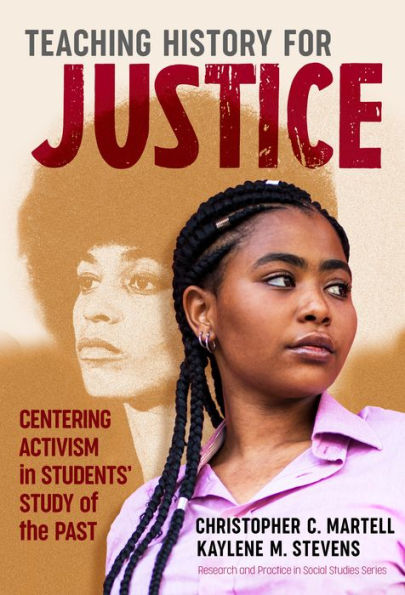
Teaching History for Justice: Centering Activism in Students' Study of the Past
176
Teaching History for Justice: Centering Activism in Students' Study of the Past
176Hardcover
-
PICK UP IN STORECheck Availability at Nearby Stores
Available within 2 business hours
Related collections and offers
Overview
Book Features:
- Outlines key components of justice-oriented history pedagogy for the history and social studies K–12 classroom.
- Advocates for students to develop “thinking like an activist” in their approach to studying the past.
- Contains research-based vignettes of four imagined teachers, providing examples of what teaching history for justice can look like in practice.
- Includes descriptions of typical units of study in the discipline of history and how they can be reimagined to help students learn about movements and social change.

Product Details
| ISBN-13: | 9780807764756 |
|---|---|
| Publisher: | Teachers College Press |
| Publication date: | 12/25/2020 |
| Series: | Research and Practice in Social Studies Series |
| Pages: | 176 |
| Product dimensions: | 6.38(w) x 9.25(h) x (d) |
About the Author
Table of Contents
Contents (Tentative)1. Centering Justice in Students’ Study of the Past 1 Why Do We Need to Teach History for Justice? 2Where Does Teaching History for Justice Originate? 8How Do We Teach History for Justice? 11Conclusion 15
2. Thinking Like an Activist 16 Approaches to History Education 19Types of Thinking in History 20Using Activist Theories to Understand History 24Thinking Like an Activist Classroom Tool 30
3. Social Inquiry 32 Making Inquiries Social 33Inquiries Through a Historical Thinking Lens 34Inquiries Through a Democratic Citizenship Lens 35Inquiries Through a Justice Lens 35
4. Critical Multiculturalism 41 with Taylor Collins, Framingham Public Schools 41Making the Curriculum Multicultural and Critical 43Critical Multiculturalism in Action 50
5. Transformative Democratic Citizenship 56 Studying a Political, but Nonpartisan, History 59Studying a Political History That is Democratic and Multicultural 62Transformative Democratic Citizenship in Action 67
6. U.S. History at the High School Level: Ms. María Lopez 73 History for Justice in the U.S. History Classroom 74Ms. María Lopez’s High School U.S. History Classroom 75
7. World History at the High School Level: Mr. Tom Kulig 90 with Maria R. Sequenzia, Framingham Public Schools 90History for Justice in the World History Classroom 91Mr. Tom Kulig’s High School World History Classroom 93
8. Ancient World History at the Middle Level: Ms. Joyce Smith 105 with Neema Avashia, Boston Public Schools 105History for Justice in the Ancient History Classroom 107Ms. Joyce Smith’s Middle School Ancient History Classroom 108
9. State and Local History at the Elementary Level: Mr. Frank Hashimoto 120 with Jennifer R. Bryson, Boston University 120History for Justice in the State and Local History Classroom 122Mr. Hashimoto’s Elementary School State and Local History Classroom 124
10. Overcoming Barriers 132 Overcoming the Barriers to History for Justice 133
Conclusion 140
References 141
About the Authors and Contributors 159
Index 161
What People are Saying About This
“Martell and Stevens offer an original and compelling framework for teaching history for social justice in the United States. Drawing on theories and practices of social activism, the authors argue that a critical approach to history education informed by social activism can enable students to understand how past social movements have led to greater justice in the present, and how a critical activist orientation can empower students in the present to promote social justice today and in the future. By including multiple examples of history teachers in diverse settings and at different grade levels who have enacted activist-oriented approaches, the book is among the most important and relevant resources for teaching and learning history during politically contentious times.”—Terrie Epstein, chair and professor of education, Hunter College, City University of New York
“In the wake of uprisings across the United States demanding racial justice,Teaching History for Justice is a timely contribution for social studies educators seeking to create classrooms focused on social change. Martell and Stevens not only make a compelling case for the need for justice in history education, but also provide educators with frameworks and pedagogical insights to cultivate students as activists. The approaches, strategies, and ideas found in this book give social studies educators a clear roadmap to leverage history education to create a more just and equitable future.”—Alexander Cuenca, assistant professor, Indiana University
